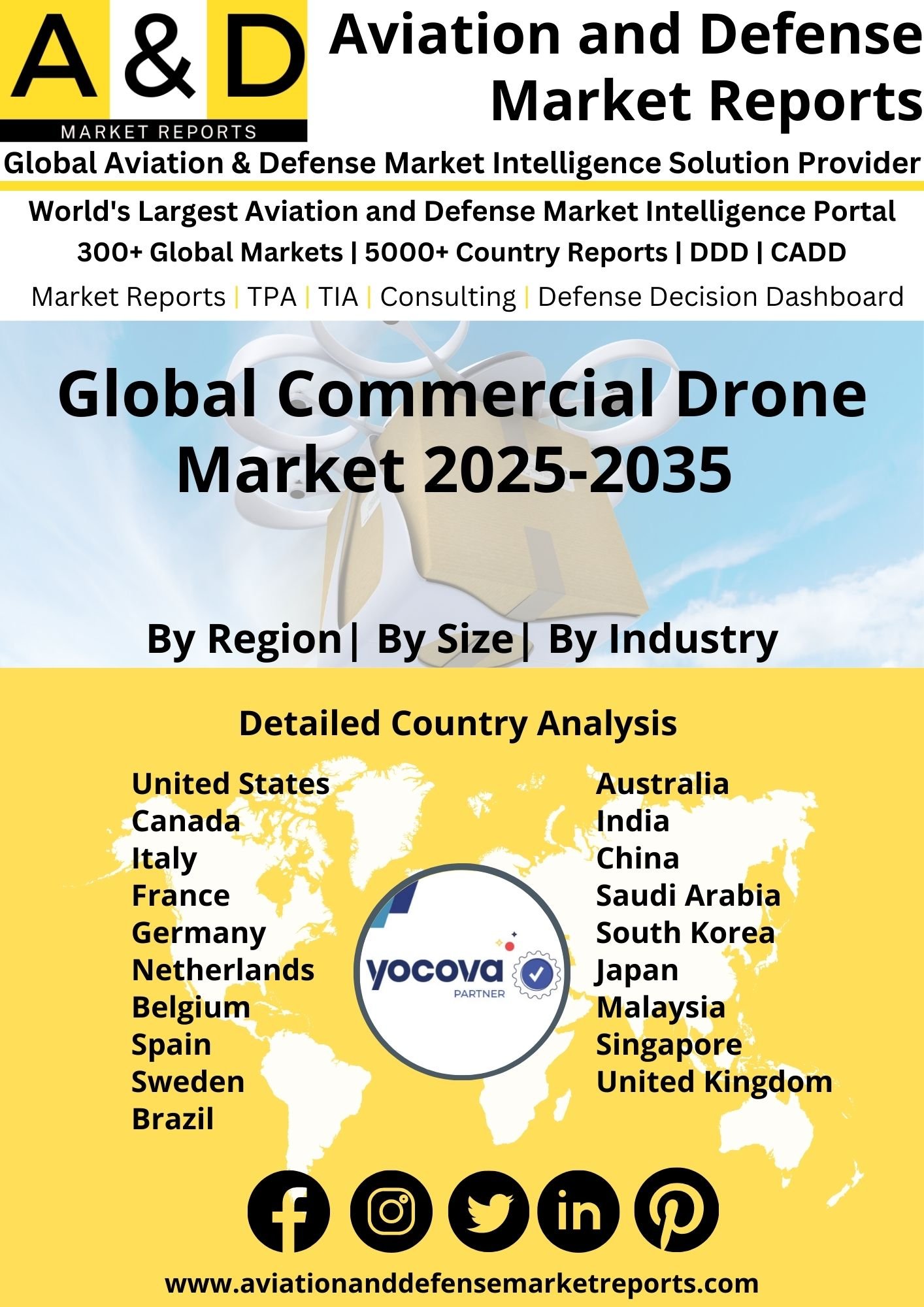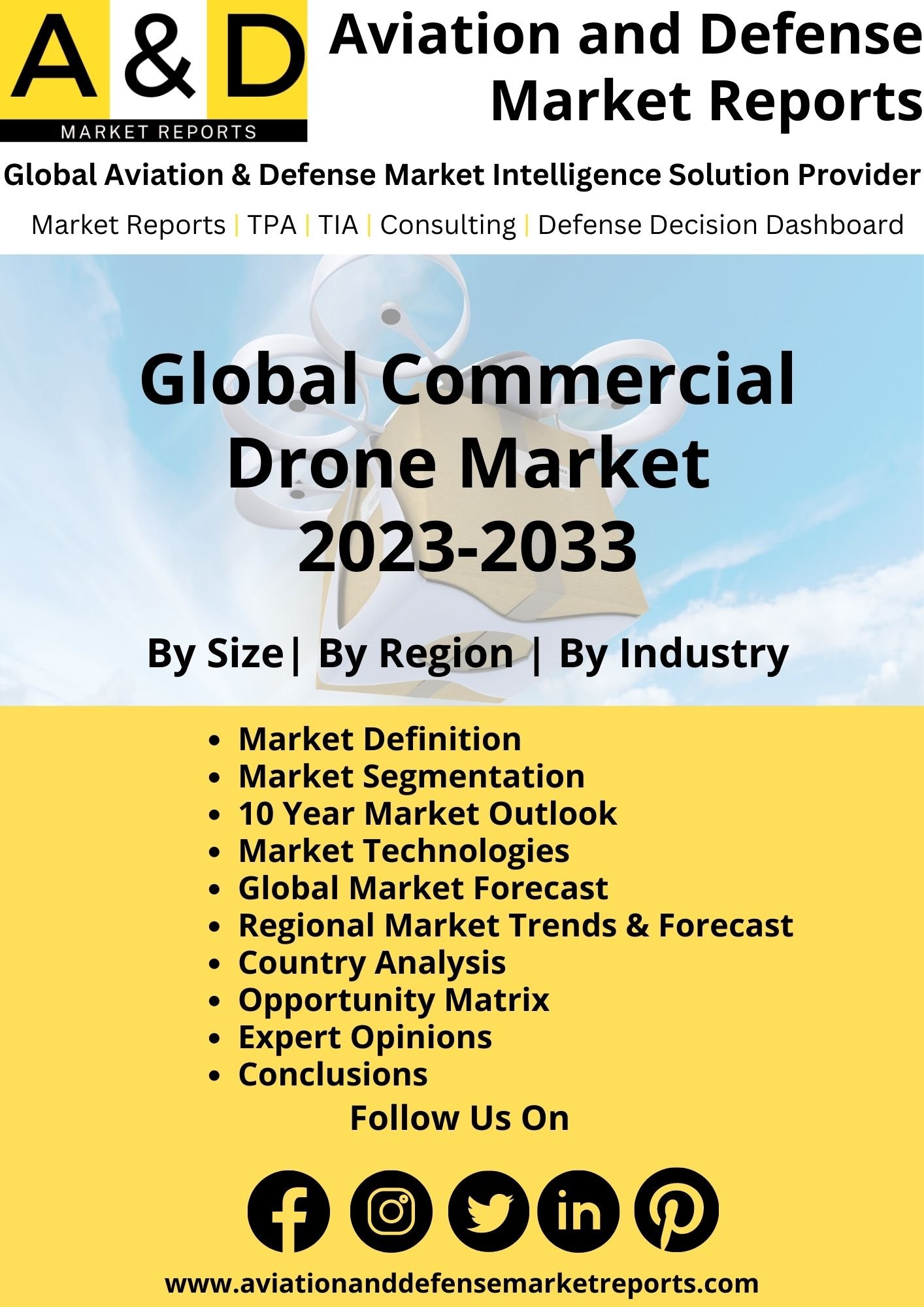Description
Commercial Drone Market
Military, research, photography, communication, and security applications employed drone technology initially. The range of technology applications has expanded to include package delivery, which has led to quicker and more convenient deliveries to customers’ doorsteps. Delivery drones can effectively load and deliver small items to customers the same day they make their purchases, including books, paperwork, food, and medicines. Delivery trucks are more expensive logistically than drones, even with labor reductions. Drones offer a mobility advantage over vehicles since they remove a road traffic bottleneck, which will ease congestion by getting cars and vans off the road.
Major factors driving Commercial Drone Market Growth
As per commercial drone market analysis, due to COVID-19, there is a greater demand than ever for package delivery by autonomous flying drones. As a result of the epidemic, certain areas of the planet are now under lockdown. There are numerous approaches to employing drones to fight the coronavirus. Companies throughout the world anticipate that drone delivery will be fully operational by 2025. Major cities lack a drone delivery system. The construction of warehouses outside of urban areas poses a challenge for drone delivery because long-distance deliveries are not yet feasible. Battery life, cargo capacity, and bad weather are just a few of the factors that affect drone delivery. Therefore, the development of small hubs that can house deliveries and operate as drone charging stations is essential.
Amazon has already filed for a patent on a beehive-shaped structure that may be used to install drone ports for charging and traffic monitoring. If more drone centers are created in a city, drones will be able to travel shorter distances and deliver more packages in less time.
Trends influencing the Commercial Drone Market Size
Postal service providers and e-commerce behemoths are major players in the drone delivery industry. Companies are starting to split their commercial operations between internal business services and drone service providers (DSPs). DSP acts as a third-party vendor when offering its services. Internal corporate services are improving their workflow by utilizing drone delivery technology. It was mentioned that the World Food Programme and UNICEF are government organizations that have started a drone delivery initiative for humanitarian goals, educating people on how to fly unmanned aircraft in addition to just delivering goods.
Commercial Drone Market Forecast & Dynamics
The drone delivery commercial drone market report is poised to grow by a value of roughly 20% during the commercial drone forecast period. To ensure that the drone industry has the pilots it needs as it continues to grow, top drone firms and organizations are offering training programs. Job opportunities for qualified drone operators are expanding in sectors like construction, energy, package delivery, and public safety.
Drones that can operate quickly and effectively are now being developed owing to the growing the increased commercial drone market size penetration of automated technologies. The mechanical design of the drone consists of satellite technology, electronic controls, sensors, and complicated algorithms. Technological advancements in battery capacity, GPS, sensors, and telecommunications devices, including cameras, have spurred the expansion of drones. Drones may now fly great distances because of market-available long-range battery solutions. Due to GPS technology and three-dimensional mobility, drones can rapidly and precisely transfer items to the desired location.
Commercial Drone Market Analysis for Recent Developments
One of the major aspects that contributes to a satisfying customer experience is delivering the package as promptly as possible. Online ordering has surged significantly in recent years, resulting in a tenfold increase in the demand for delivery employees. Waiting for a product to arrive in seven days was a normal scenario for consumers a decade ago. The average time it takes for a delivery to arrive has decreased to two days over time. Customers now expect essential products to be delivered the next day or the same day. Drone delivery is estimated to cost 80 percent less than what a next-day delivery service costs now.
Amazon is already developing Amazon Prime Air, which aims to use tiny drones to hasten package delivery in the final mile. Early estimates indicate that in the United States, shipping a 2 kg item within a 10-kilometer radius costs Amazon between USD 2 and USD 8, vs only about 10 cents when utilizing a drone, which can deliver the same item more quickly and on the same day.
The global commercial drone landscape has witnessed transformative growth, impacting industries ranging from agriculture and construction to logistics and public safety. Commercial drones, also known as Unmanned Aerial Vehicles (UAVs), are deployed for a variety of applications, leveraging advanced technologies to enhance efficiency and data acquisition. In agriculture, drones equipped with sensors and imaging technology provide farmers with valuable data for crop monitoring, precision agriculture, and yield optimization. In construction, drones are utilized for surveying, mapping, and monitoring construction sites, improving project management and reducing costs.
The logistics industry has embraced drones for last-mile delivery, contributing to faster and more cost-effective parcel transportation. Public safety agencies use drones for surveillance, search and rescue operations, and disaster response, providing real-time situational awareness. Technological advancements, including longer flight times, improved sensors, and increased payload capacities, enhance the capabilities of commercial drones. Global regulations and standards are evolving to ensure safe and responsible drone operations, promoting harmonized practices across different regions. The ongoing evolution of commercial drones in 2023 underscores their increasing integration into various sectors, driving innovation, and efficiency, and creating new opportunities in the rapidly expanding drone ecosystem.





